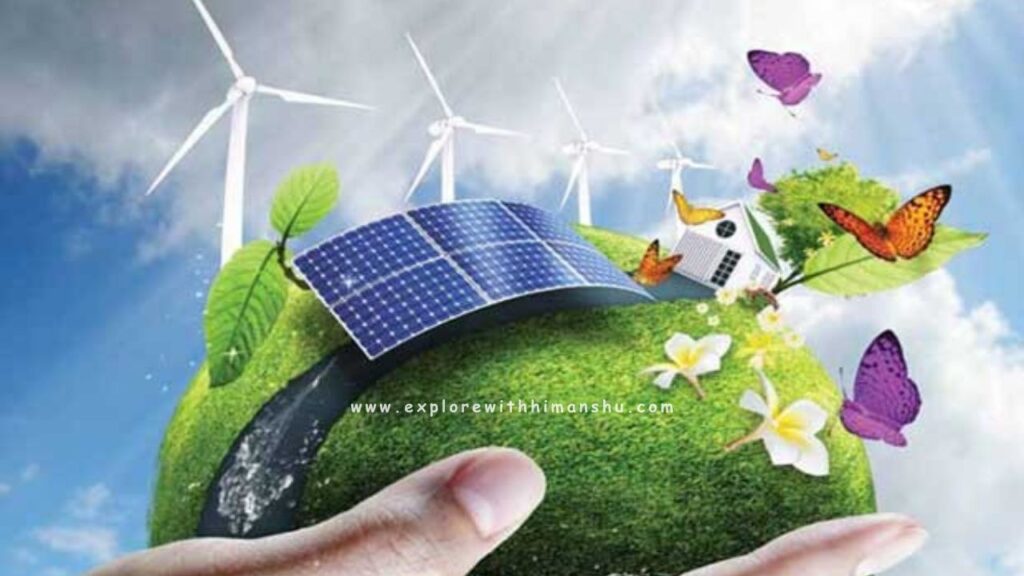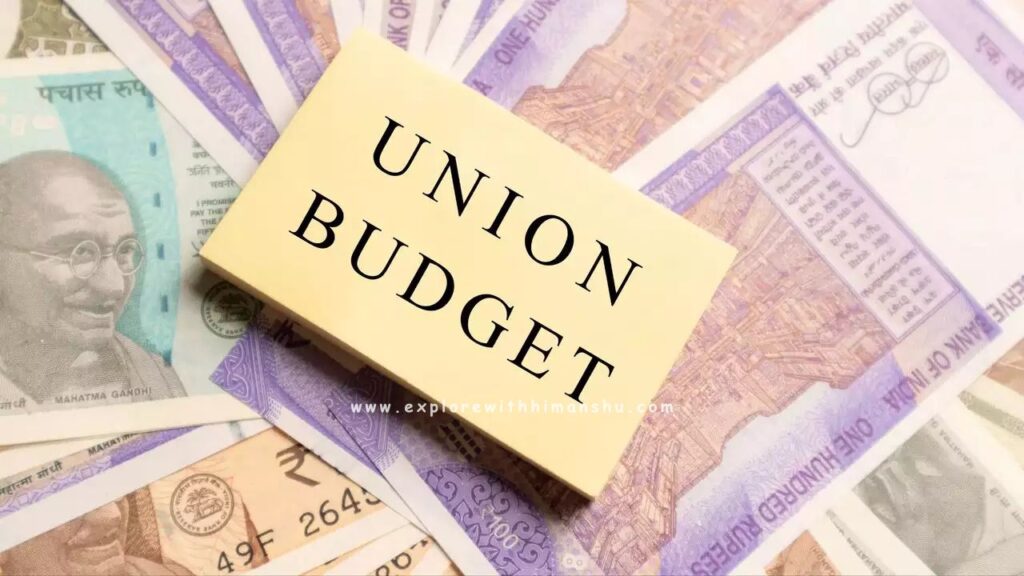The Union Budget 2025 presented by Finance Minister Nirmala Sitharaman aims to lay the foundation for a resilient, inclusive, and sustainable India. With an eye on transforming the economy, the budget focuses on several key areas: tax reforms, agriculture, green energy, infrastructure development, and financial reforms. This blog aims to provide a comprehensive overview of the budget’s key proposals and their potential implications for the Indian economy and society.
India’s journey toward economic prosperity has been characterized by both immense challenges and significant growth opportunities. The Union Budget 2025 is a step in the right direction to tackle these challenges and create a future that is inclusive, sustainable, and globally competitive.

1. Empowering Taxpayers: A Progressive Tax System
The Union Budget 2025 introduces several reforms to improve the tax system, particularly for the middle class and small businesses. The government’s efforts are aimed at making the tax regime more progressive while offering relief to taxpayers.
Key Tax Reforms:
- Increased Tax Exemption Limit: The budget proposes an increase in the income tax exemption limit to ₹12.5 lakh per annum for individuals. This move aims to provide tax relief to the middle class, who have been facing increased financial pressures due to rising inflation and the post-pandemic economic recovery.
- Lower Tax Rates for Higher Income Brackets: The finance minister has announced reduced tax rates for those in higher income brackets. This progressive tax reform ensures that the wealthiest individuals and corporations contribute their fair share while reducing the tax burden on salaried individuals.
- Enhanced Deductions: The standard deduction has been increased, and there are new provisions for deductions on home loan interest, medical expenses, and education. These measures help individuals and families manage their finances better.
These tax reforms are set to stimulate consumer spending, boost domestic demand, and provide the middle class with more disposable income. This is expected to further contribute to the recovery of sectors such as retail, automobiles, and housing, which are integral parts of the Indian economy.
Additionally, by simplifying the tax system, the government intends to reduce compliance burdens, making it easier for taxpayers to file returns and pay taxes. This has the potential to enhance tax compliance and broaden the tax base, leading to greater fiscal health for the country.
2. Agriculture and Rural Development: Empowering Farmers
Agriculture continues to be the backbone of India’s economy, with a large percentage of the population relying on it for their livelihoods. The Union Budget 2025 places significant emphasis on revitalizing the agriculture sector and ensuring that the benefits of economic growth reach rural India.- explorewithhimanshu
Agricultural Initiatives:
- Increased Research Funding: The government has allocated funds for agricultural research, particularly in areas like climate-resilient crops. With changing weather patterns, it is essential to develop crops that can withstand droughts and flooding. This focus will help increase farm productivity and ensure food security.
- Improved Storage Infrastructure: The budget includes measures to expand cold storage and supply chain infrastructure, which will reduce post-harvest losses. This will ensure that farmers can preserve their produce for longer periods and improve their income.
- Credit Access for Farmers: The budget proposes easier access to credit for farmers, including small and marginal ones. With the provision of low-interest loans, farmers will be able to invest in modern equipment, improve irrigation systems, and adopt new farming technologies.
These reforms aim to uplift the agriculture sector and increase the income of farmers, making them less dependent on monsoon rains. Additionally, greater access to credit and infrastructure will help farmers become more self-reliant and resilient in the face of climate change.
Technology in Agriculture:
The government has also emphasized digitization in agriculture. From agro-tech startups to precision farming, technology is expected to revolutionize the way farming is done. For instance, drone technology for spraying pesticides and AI-based weather prediction systems can help farmers make more informed decisions. The focus on smart farming and data-driven agriculture will increase efficiency, productivity, and sustainability across the sector.

3. Green Energy: A Sustainable Future
Sustainability is one of the core pillars of the Union Budget 2025. Recognizing the urgency of addressing climate change, the government has proposed several initiatives aimed at transforming India’s energy sector to be greener and more sustainable.
Investing in Renewable Energy:
- Solar and Wind Power: The budget allocates funds for the expansion of solar and wind energy capacities. As India seeks to achieve its renewable energy goals, increased investments in clean energy infrastructure will help reduce the country’s dependence on coal and fossil fuels. India’s target to achieve 500 GW of renewable energy capacity by 2030 is an ambitious yet achievable goal.
- Green Hydrogen: The government has introduced provisions for green hydrogen technology, which will become an essential part of India’s energy transition. Green hydrogen, produced using renewable energy sources, has the potential to power sectors such as heavy industries, transport, and storage systems.
- Electric Vehicles (EVs): There are also incentives for the development and adoption of electric vehicles. The budget provides for the expansion of EV infrastructure, including charging stations, to make electric cars, buses, and two-wheelers more accessible to the public.
These green energy initiatives are designed to create a carbon-neutral economy, helping India reduce its carbon footprint while creating new economic opportunities in the clean energy sector. The growing demand for solar panels, wind turbines, and electric vehicles will also open up job opportunities and stimulate the green technology sector.
4. Infrastructure Development: Building for the Future
The Union Budget 2025 outlines a comprehensive plan to upgrade and expand India’s infrastructure. This will have a direct impact on business growth, connectivity, and quality of life for millions of citizens.
Key Infrastructure Projects:
- National Highways and Expressways: The government has committed significant funds to expand the national highway network, improving connectivity between cities, towns, and rural areas. This will make the transportation of goods more efficient and reduce logistical costs for businesses.
- Metro Expansion: India’s metro systems are set to expand significantly, with new metro lines being introduced in Tier-2 and Tier-3 cities. This will reduce traffic congestion, improve air quality, and make public transport more accessible to a growing urban population.
- Smart Cities and Digital Infrastructure: The government has announced funding for smart city initiatives and digital infrastructure. This includes 5G network expansion, which will bring high-speed internet to rural and remote areas, and enhance India’s digital economy.
These infrastructure investments are aimed at transforming India into a global manufacturing hub while improving the quality of life for citizens. They will create millions of jobs in construction, technology, and manufacturing sectors, thus contributing to the country’s economic growth.
5. Financial Reforms: Promoting Business and Innovation
Financial reforms are key to creating a thriving business ecosystem in India. The Union Budget 2025 introduces measures that will encourage entrepreneurship, innovation, and investment.
Key Financial Initiatives:
- Access to Credit for SMEs: Small and medium enterprises (SMEs) will benefit from easier access to credit facilities. The introduction of low-interest loans and simplified loan application processes will help SMEs scale up their businesses and innovate.
- Fintech Development: The budget provides for the promotion of fintech innovations, with initiatives to support the growth of digital financial services across urban and rural India. This will enhance financial inclusion and ensure that underserved communities have access to banking and payment systems.
- Banking Sector Reforms: The government has proposed several reforms aimed at improving the efficiency and transparency of the banking sector. Strengthening the financial system will help boost investor confidence and create a more stable financial environment.
These measures will make it easier for businesses to thrive in India, leading to an entrepreneurial boom that will drive long-term economic growth.

6. A Future-Ready Economy
The Union Budget 2025 represents India’s bold vision for a future-ready economy. It is clear that the government aims to position India as a leader in the global marketplace by embracing technology, sustainability, and inclusive growth.
Conclusion:
The Union Budget 2025 is a well-rounded and comprehensive effort to address the pressing challenges of India’s economy while laying the groundwork for a prosperous and sustainable future. From tax relief to green energy initiatives, the government’s forward-thinking approach is expected to create new opportunities for businesses and citizens alike.
As we move forward, the success of this budget will depend on the implementation of these reforms. If executed properly, India could be on its way to becoming a global leader in innovation, sustainability, and economic equity.


